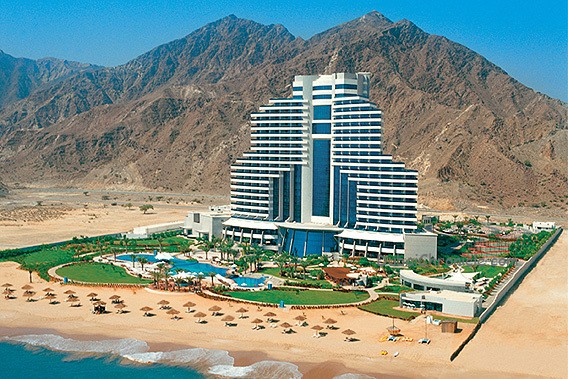- MENA Islamic banking assets with commercial banks to more than double to $990bn by 2015
According to Ernst & Young’s inaugural World Islamic Banking Competitiveness Report 2011, Islamic banking assets with commercial banks globally will reach US$1.1 trillion in 2012, a significant jump of 33% from their 2010 level of US$826 billion. The report also highlighted that Islamic banking assets in the Middle East and North Africa (MENA) region increased to US$416 billion in 2010, representing a five year CAGR of 20% compared to less than 9% for conventional banks. As new geographies open up to Islamic banking, the MENA Islamic banking industry is expected to more than double to US$990 billion by 2015.
The report was presented at a special plenary session of the 18th Annual World Islamic Banking Conference today where more than 1,200 industry leaders from over 50 countries gathered to chart the future of Islamic finance. The report explores key industry trends and critical success factors guiding the global Islamic banking and finance industry into its next chapter of performance and growth.
Ashar Nazim, MENA Islamic Financial Services Leader, Ernst & Young, said: “The global Islamic finance industry continues its quest to boost international competitiveness and to build a sustainably profitable business model. Both the challenge and the opportunity currently facing leading industry players is how will Islamic banks succeed in making the historical growth curve sustainable.”
Growing Islamic banking assets and market share
Islamic banking market share of all banking assets in the MENA region has reached 14%, whereas in the GCC it crossed the all important 25% threshold in 2011. The report expects that there will be a change of play going forward as Islamic banks compete for mainstream customers who are open to Islamic or conventional banking.
Ashar adds: “A worrying concern is the limitations in the enabling legislative, regulatory, tax and legal environment in most OIC markets, which add to the cost and complexity of Islamic banking operations. Where there are guidelines and standards issued by industry infrastructure institutions, their reach and enforceability remains a concern. These must be addressed as priority.”
Performance risks and advantages
The report cautions that the Islamic banking industry is still fragmented with most Islamic banks holding less than US$13 billion in assets and are yet to achieve scale as they face pressure on profitability. In addition, exposure to downgraded real estate markets remains a concern for Islamic banks and this may also affect future growth.
Business repositioning, mergers and acquisitions and conversions appear set to dominate MENA Islamic banking in 2012. A sizeable decline in industry profitability from 2006 levels of returns on equity of 23% to the present levels of around 10% have left Islamic banks exposed to the charge of operational deficiencies. Clearly, the structural advantages of stronger retail focus begetting better financing margins, higher deposit growth and higher proportion of free deposits needs to be translated into higher profitability. However, misaligned people-processes-systems have led to high cost to income ratios for most Islamic banks.
“Higher provisions and operating costs have contributed to the steep decline in profitability of Islamic banks. Returns on assets have dropped from 4% in 2006 to 1.5% in 2010, due to deteriorating asset quality,” added Ashar.
The CEO Agenda
According to the report, two key themes are starting to emerge. The first is the need for excellence in banking operations and the second is to improve product innovation. The combined MENA Islamic banking profit pool could rise to US$15 – 19 billion in 2015 from the 2010 levels of US$5 – 6 billion, primarily by combining operational transformation with a more robust risk infrastructure. Potential growth opportunities for regional Islamic banks include the emerging Islamic geographies, growing affluence among retail customers, better alignment with real economy and rising SME banking.
“Ensuring sustainable growth will require brave, meaningful and decisive performance improvement initiatives. CEOs and boards appear keen on transforming operating models for quality growth and to create sustainable shareholder value,” added Gordon Bennie, MENA Financial Services Leader, Ernst &Young.
“Reduced profits and valuations are amongst the biggest business risks facing Islamic banks, which can partially be tackled by introducing a service driven culture, investing in customer centric activities, and with better use of technology and risk management tools. Sharpening of their Shari’a differentiation by acquiring and building specialist product skills and ensuring better integration with the real economy will help CEOs to take their banks to the next phase of growth,” said Gordon.
Call to establish iSWF
The growth opportunities in OIC markets are clear. The best way to take advantage of them, however, is not. With the growing internationalization of the industry, the report says that now would be the opportune time for the industry to consider establishing Islamic sovereign wealth funds (iSWF).
“Most Islamic banks remain localized to their GCC base which makes it very difficult to get a holistic picture of emerging markets and opportunities. iSWF could provide this visibility very effectively. As the lead promoter, the iSWF would attract significant interest from other financial institutions, helping the industry grow in a sustainable way,” concluded Ashar.




































